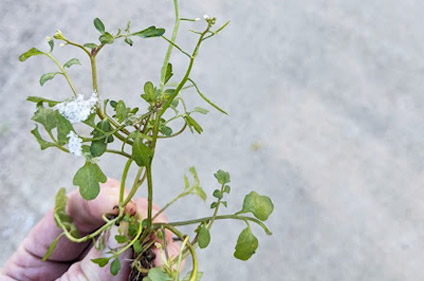In fact, that is good information to have as we see more and more city dwellers flee the more densely populated scene to settle in more agrarian settings. We can run into many different weeds from properties where pastural areas or other meadowlands have been converted into lawns, so just knowing the location is a critical factor.
So, what is a weed? Some of the oldest definitions include wording like "a plant grown out of place" or "a plant growing where it is not wanted," and in most cases this still holds true. While there is a percentage of the population that does not agree with pesticide usage and will be content with any plant growing in their lawn, our focus is much more on the homeowner and property manager that would prefer a lawn, turf area, or ornamental bed growing only what they want there.
Weeds are broken down into two basic categories – broadleaf and grassy or grass-like. From there, they are further distinguished by subcategories which are determined by their life cycles.
These categories are set as perennials (weeds that persist and come back every year), biennials (plants that have a 2 year life cycle – usually vegetative in year 1 and reproductive in year 2), and annuals (which complete their life cycle in 1 year).
Lastly, annuals will exhibit two classes based on when they occur – winter annuals and summer annuals. Winter annuals will begin germinating in the fall and through the winter as favorable weather conditions continue, while summer annuals will begin germination in the spring through the summer.
Knowing the life cycle of a particular weed is crucial when determining if or which pre-emergent herbicide can be effective in your overall weed management strategy and the proper timing. Along with these factors, you will have to know if the weed is in an ornamental bed vs. a lawn, and if in the lawn, what are the desirable grasses that the lawn consists of. Only then should you start to make decisions about which herbicides to use.
There are multiple approaches for weed control in the lawn, but all of them start with maintaining a thick stand of healthy grasses thereby crowding out weed intrusion. Along with that, using weed-free seed is a good technique to help keep them from getting started. Unfortunately, some weed seeds can remain dormant in the soil for decades just waiting for the right time to sprout, so sometimes nature will just throw you a curveball.
Stay tuned for more specific strategies including introduction to some tough to manage weeds.
As always, contact the Ewing Technical Services Team if there are any questions.




